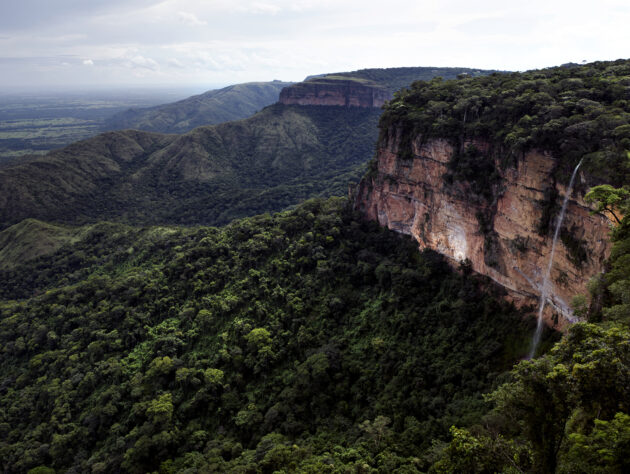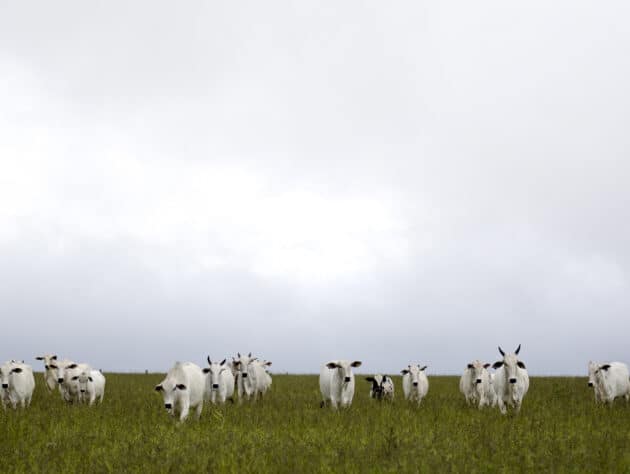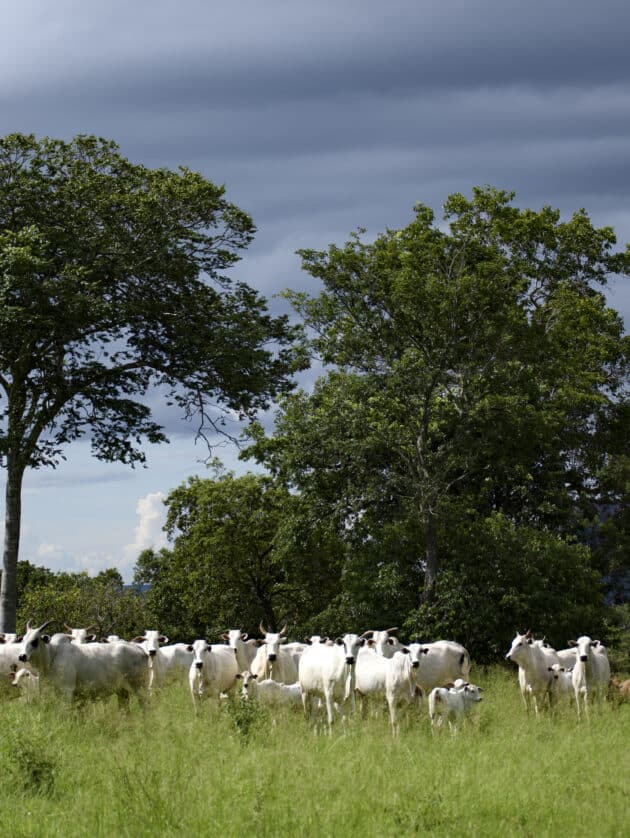The Deforestation-Free Call to Action for Leather
The Deforestation-Free Call to Action for Leather asks brands and retailers to commit to sourcing their bovine leather from deforestation/conversion-free supply chains by 2030 or earlier. Co-led by Textile Exchange, the Leather Working Group (LWG) and World Wildlife Fund (WWF), it sets meaningful expectations for brands and develops tools and guidance to support them on this journey.
PURPOSE
Cattle rearing is considered one of the most significant drivers of the deforestation and conversion of natural ecosystems
Cattle rearing is considered to be one of the most significant drivers of deforestation. It is also a major contributor to the conversion of natural ecosystems such as grasslands and savannahs. While beef production is the primary reason for cattle farming, the leather industry has an important opportunity to drive change.

CHALLENGES
Leather brands and retailers are facing increasing pressure and need guidance
Currently, the industry is in the early stages of tackling deforestation and conversion. Brands and retailers that are using leather must take immediate action to transform their long, complex, and often opaque supply chains, which currently make it challenging to identify their raw material sources.

About
We’re aiming to drive collective action to stop deforestation in leather supply chains
The Deforestation-Free Call to Action for Leather is a cross-sector initiative aimed at galvanizing action from brands to end the deforestation and conversion of natural ecosystems linked to leather sourcing. In doing so, it looks to protect wildlife habitat and biodiversity, preserve carbon stocks to mitigate climate change, and protect human rights.
GOALS
The impacts we want to have

PARTICIPATING BRANDS
Brands that have already signed on to the Deforestation-Free Call to Action for Leather include
adidas, AllSaints, American Eagle Outfitters, Inc. (AEO), AZZAS 2154, BESSON CHAUSSURES, Birger Christensen Collective, BMW Group, Capri Holdings, Everlane, H&M Group, IKKS, Inditex, Kering, Longchamp, Mango, Marks and Spencer, NIKE Inc., PUMA, Range Revolution, Reformation, R.M.Williams, Roots, and Tapestry
GUIDANCE
We're giving brands guidance to achieve their goals
We have created a detailed framework with a set of ambitious, yet achievable targets that tackle the challenge from multiple angles. To make them possible, we’re giving participating brands in-depth guidance on how to work towards sourcing leather in a way that’s equitable, transparent, and deforestation-free. Brands that commit to the Deforestation-Free Call to Action for Leather will recieve the following guidance to support them on their journeey, with more documents in development.
FAQS
Frequently Asked Questions
If you have a question not yet answered here, read our full FAQ document to find out more.
When is the deadline to register?
There is no deadline for brands to register and be part of this collective action. Brands can decide when is most appropriate for them to register for the Deforestation-Free Call to Action for Leather as this will also depend on the brand’s strategy, ambitions, resourcing, and priorities.
Do I have to be sourcing leather from South America or a high-risk area to join the Deforestation-Free Call to Action for Leather?
The Deforestation-Free Call to Action for Leather is for any brand sourcing leather, and it applies globally. While the risks and pressures are higher in South America, it does not mean that other countries are not at risk, including for human rights violations.
A key step is for brands to first determine whether they have the supply chain visibility to know with confidence that they are not sourcing from South America. This means having visibility to slaughterhouse as a minimum. If your visibility is with vendors who are not slaughterhouses, then the likelihood is that further supply chain mapping efforts are needed.
Do brands need to map their supply chains all the way back to farm?
The Deforestation-Free Call to Action for Leather requires brands to map their supply chains to slaughterhouse during Phase One of the roadmap. Mapping to farm level is certainly not possible for brands to do individually. Slaughterhouses ultimately will play a strong role in this mapping process. Phase Two will focus on effective engagement with slaughterhouses, which will need to be conducted in close collaboration with the beef sector and with other existing initiatives.
How is deforestation-free defined in the context of this Deforestation-Free Call to Action for Leather?
The Deforestation-Free Call to Action for Leather refers to the Accountability Framework Initiative’s definition of no deforestation. This refers to gross deforestation and prohibits both legal and illegal deforestation, including direct and indirect farms. The cut-off date is December 31, 2020 (in alignment with the European Deforestation Regulation (EUDR).
Is conversion of natural landscapes included?
Conversion is included and will be expected to be addressed in a company’s policy. However, we recognize that due to the lack of available data, monitoring methodologies, and verification systems for conversion, initial targets will be set only for regions where risk has been identified and monitoring tools are available. The Cerrado and Chaco, in particular, are specific areas in South America that are facing high conversion pressures and also have monitoring systems in place that will allow for effective action.
What are reporting expectations and requirements?
Brands will be required to report annually in Textile Exchange’s Materials Benchmark and the Leather Working Group Sourcing Declaration (if applicable). Although disclosure is a requirement, brands and retailers are not required to validate annual reporting until after 2025. The specific requirements beyond 2025 are being defined and developed and will be shared at a later date.
How should signatories communicate about the Deforestation-Free Call to Action for Leather?
How should companies who are not signatories talk about the Deforestation-Free Call to Action for Leather?
LEARN MORE
Get in touch with our team to learn more and sign up
Brands can get in touch with our team directly to learn more about the Deforestation-Free Call to Action for Leather and how to join.